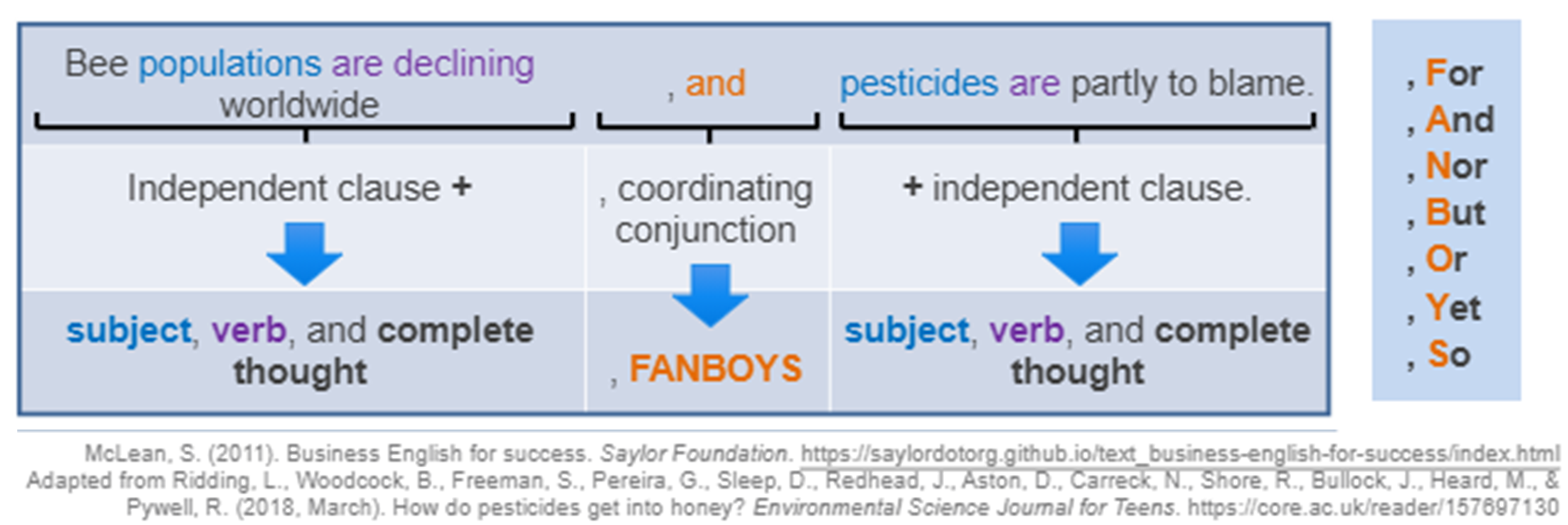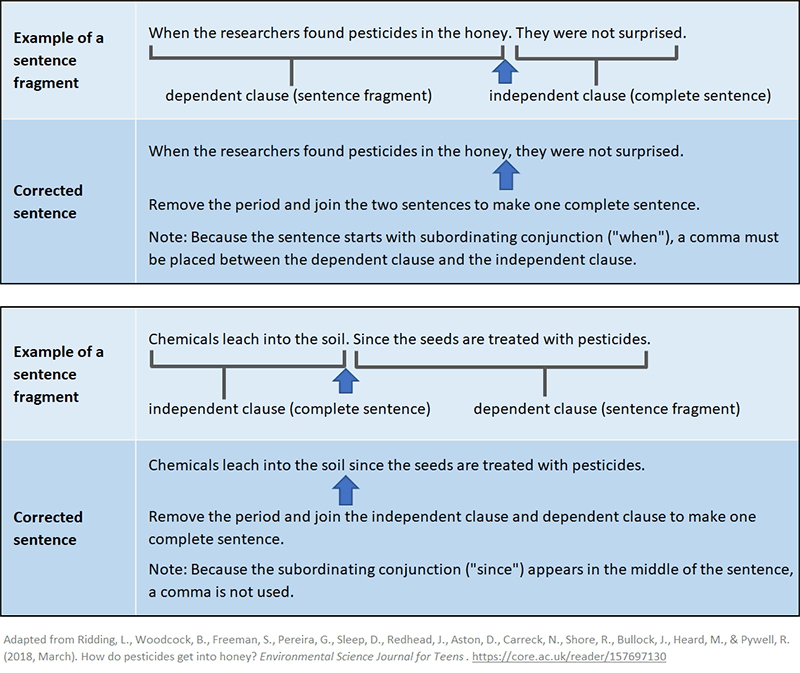22 Sentence Structure and Variety
Learning Objectives
After completing this chapter, you will be able to
- identify different kinds of complete sentences: simple, compound, complex
- identify common sentence structure errors
- fragments
- run-ons
- learn to use a variety of sentence structures
No matter who your readers are or what your purpose is, good grammar is critical to effective writing. Poor grammar can confuse your message and will almost certainly negatively affect your reader’s opinion of you and the company or organization you represent. For this reason, understanding the basic elements of correct sentence structure is key.
Three Types of Complete Sentences: Simple, Complex, and Compound
A complete sentence contains at least one subject, a verb, and it expresses a complete thought. If a sentence is missing a subject, verb, or complete thought, it is incomplete.

1. Simple Sentences
A simple sentence is one independent clause; it has one subject, one verb, and is a complete thought.

2. Compound Sentences
A compound sentence is when you join two independent clauses together using a coordinating conjunction. The most common coordinating conjunctions form the acronym FANBOYS.

A compound sentence must have an independent clause on either side of the FANBOYS. Some sentences may appear to be compound sentences because they contain a FANBOYS; however, these may not have an independent clause after the FANBOYS.
3. Complex Sentences
A complex sentence is when a dependent clause is joined with an independent clause. The dependent clause will contain a subject and a verb; however, it is incomplete. All dependent clauses begin with a subordinating conjunction

Subordinating conjunctions can appear at the beginning, middle, or end of a sentence.


Common Sentence Errors: Fragments and Run-ons
Sentence errors are unprofessional. They can negatively affect your readers’ overall impression of your company or organization and they can cause confusion in meaning.
1. Sentence fragments
A sentence fragment is a piece of a sentence; it is either missing the subject, the verb, or the complete thought. You can fix a fragment by adding the missing subject, verb, or complete thought.
Sentence “Completeness” Checklist
❑ Is there a verb?
❑ Does the verb have a subject?
❑ Do the subject and the verb make sense together and express a complete thought?
❑ If the sentence contains subordinating words – relative pronouns (that, which, who) or subordinate markers – does the sentence also contain an independent clause?
If the answer to every question is yes, the sentence is complete.
If the answer to any question is no, you have a fragmented sentence error.
Sometimes the missing part of a sentence fragment can be found in the sentence before or after the fragment. If this is the case, you can correct the fragment by joining it to the sentence that completes it.
Test yourself
2. Run-On Sentences
Run-on sentences consist of multiple complete sentences that have been incorrectly joined or not properly separated. There are two types of run-on sentences: fused sentences and comma splices.
Watch this video[1] to review your understanding of fragments and run-ons.
Correcting Run-on Sentences.
Go through this interactive module to learn how to identify and correct run-on sentences in your writing.
Sentence Variety
Watch this video[2] for tips on how to create sentence variety WITHOUT creating sentence errors:
- Shannon, D. (2021, March 28). Fragments and runons [Video]. YouTube. https://www.youtube.com/watch?v=1Gr35gD7aWc ↵
- Shannon, D. (2021, March 31). Sentence variety [Video]. YouTube. https://youtu.be/-dacQbooTNo ↵




